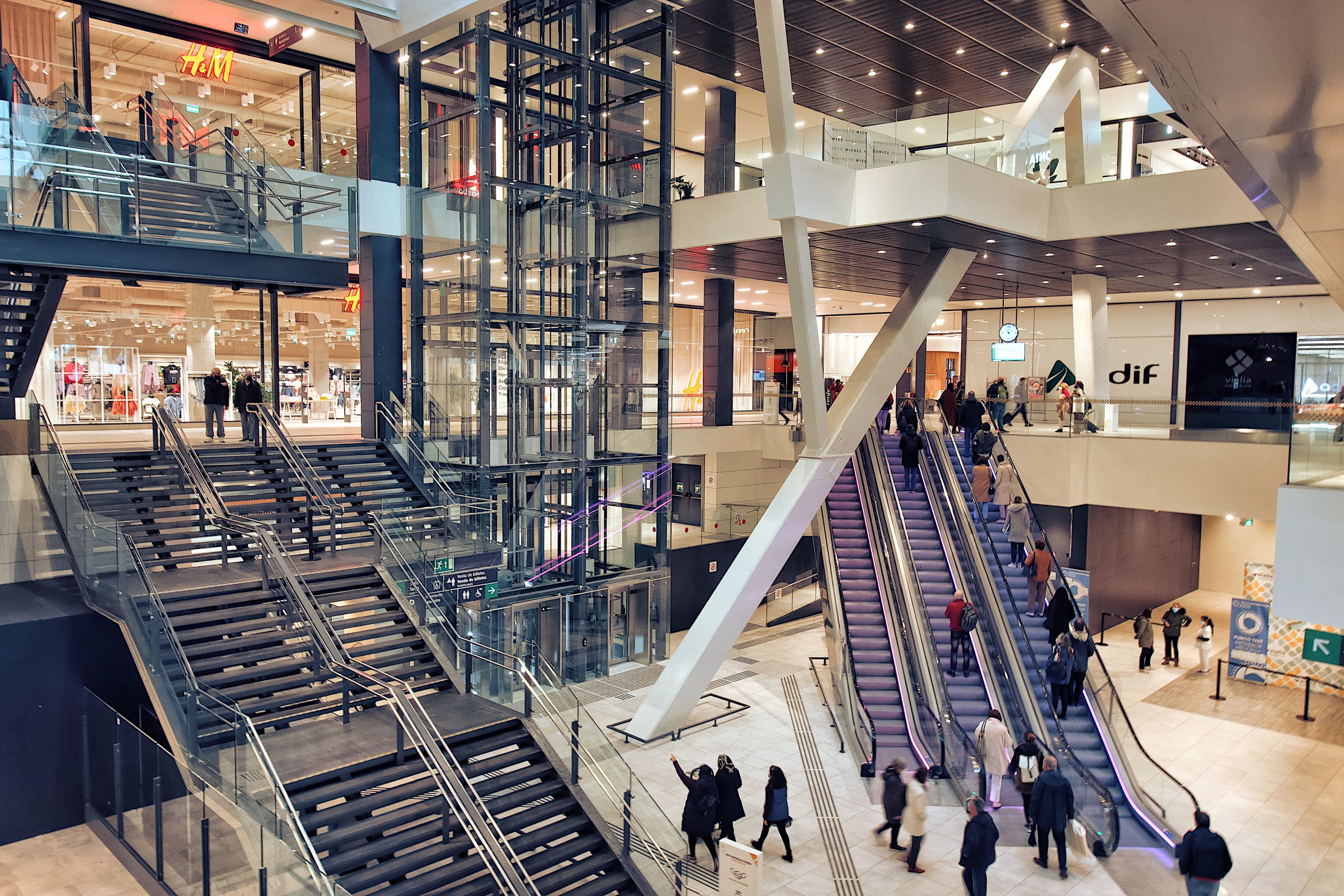Escalaphobia, the triangle of escalator safety, and user tips
Have you ever heard of escalaphobia, the fear of escalators? This story offers a practical list of “dos & don’ts” to help users to alleviate their fears, combat their phobias, and stay safe while using escalators.

The curious malady of escalaphobia
Did you know that some people have a fear of escalators? It’s called “escalaphobia”. Some might scratch their heads and wonder how someone could fear something so ubiquitous as escalators. It’s perhaps comparable to those who break into a cold sweat at the thought of boarding an airplane, despite the billons of safe journeys each year.
Still, much like how aerophobia doesn’t halt the vast throngs of vacationers and business people jetting around the world, escalaphobia doesn’t stop millions from riding these mechanical staircases every day – at malls, in transit stations, even art galleries. It’s hard to resist the convenience of conquering gravity without even breaking a sweat.
An escalator, with its slow and steady rhythm, is one of the most predictable things in this unpredictable world. Step on, step off, repeat! These steel wonders of transportation have been around for over a century now, chaperoning billions to their destinations, higher floors, deeper subway lines, all with a grace and reliability that’s impressive.
So in case you’re one of the many people who suffer from escalaphobia, we’ve got some tips on safe usage of escalators that will hopefully help you to take that first step.
Escalator safety triangle
What keeps passengers on escalators and moving walks safe? Well, there are three key ingredients to escalator safety: design, maintenance and user behavior. At TK Elevator, we focus much of our work on the first two cornerstones of this so-called escalator safety triangle. That is, we design and maintain our elevators to ensure excellent safety. We also have tools to educate passengers on how they can safely use escalators! More on that further down.
The three factors of escalator safety

Escalator safety: design
Escalators are everywhere, used by billions of people every day. Without them, there would be huge lines for the elevators. As a rule of thumb, it’s important to leave elevators for people who really can’t use an escalator.
With escalators being so common, they must conform to incredibly strict safety standards. Fortunately, TK Elevator employees also use their safety expertise for the greater good, as many are involved in the development of safety codes around the world, such as in the USA, China and in the European Union. The work they do helps ensure the safety of all escalators and moving walks, no matter who made them.
According to Elena González Ruibal, Global Product Lifecycle Manager for Escalators at TK Elevator: “The standard safety codes already ensure excellent passenger safety, but TK Elevator frequently goes beyond the code. We are constantly developing new technologies and safety devices that add an even greater level of safety assurance. This allows us to be one step ahead of standard requirements, and ensure maximum passenger safety.”
Escalator safety: maintenance
Escalator maintenance and inspections are paramount to ensuring safety, much like routine health check-ups for our bodies. Our qualified technicians at TK Elevator routinely service our escalators and those of other manufacturers, performing a thorough health scan from the handrails to the steps, from the drive systems to the safety devices.
Regular maintenance helps identify potential issues early on and prevent minor hiccups from evolving into major malfunctions. At TK Elevator, we believe that our technicians are the heroes who ensure the dance between human and machine continues without a misstep.
Beyond our own maintenance and inspection work, escalators are subject to periodic inspections by independent safety regulators, who meticulously scrutinize each component to confirm it meets all the necessary safety standards. Although the details and frequency of such inspections can vary by country, these regular checks help keep escalators safe, reliable and ready to transport millions of people on their vertical journeys every day.

Escalator safety: user behavior
It’s impossible to understate the vital role that sensible user behavior plays in escalator safety. Despite the diligence of product designers, maintenance crews and safety inspectors, it’s the riders who have the final say on how safely an escalator journey will unfold.
Following simple guidelines like those provided below can make a world of difference. How you stand, what you wear and how you act will always have a great impact on safety. It is also important to observe local signage about not bringing strollers or oversized luggage onto the escalator.
So while an escalator does its part by moving us effortlessly from one level to another, our mindful actions will ultimately ensure that we and our fellow riders arrive safely at the top (or bottom). And this is why we at TK Elevator are committed to raising awareness about safe escalator usage amongst passengers.
And, to our dear friends with escalaphobia, next time you’re in front of an escalator, take a deep breath and step on. Know that countless experts have done their part to ensure your safety. Enjoy the trip, marvel at human ingenuity, and take solace in the fact that you are one of millions of passengers who enjoy a safe escalator ride every day.
And don’t forget to stick to these tips for escalator safety!

